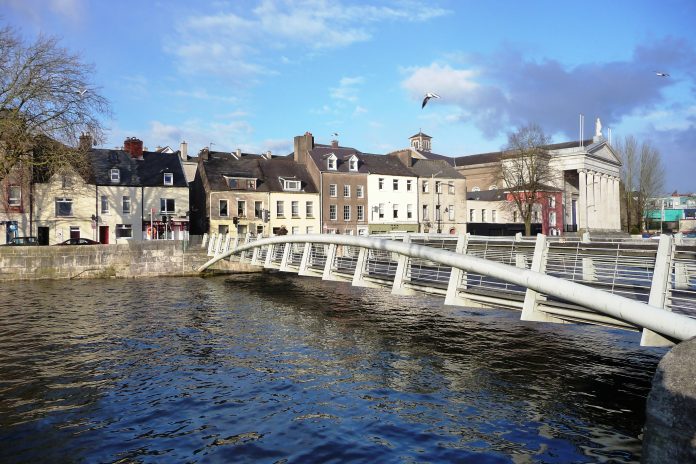The Irish government has announced a major investment in flood relief works for Cork City, in the south of Ireland, bringing protection to 2,100 properties.
Cork City and County are benefitting from major investment in flood relief projects with the proposed Cork City Scheme part of an overall programme of flood relief works in Cork which will involve a total investment of €300 million when major schemes already completed is taken account of.
“I am also delighted to say that we have 12 major schemes currently at construction stage in different parts of the country and a further 23 at design development and planning stage,” said Seán Canney, Minister of State at the Office of Public Works.
At the announcement, Ken Leahy from the design team, Arup, presented the scheme’s proposals. He outlined the proposed measures, which include a new Fluvial Flood Forecasting System; revised dam operational procedures to maximise available reservoir storage to reduce peak flows during major events; and direct defences through the city through the use of walls and embankments.
Minister Canney stated that this was the largest flood relief scheme ever to be undertaken in Ireland at an estimated total project cost of €140 million. This capital investment in Cork City will provide significant job opportunities during construction and shows commitment to seriously address flooding problems in the most at risk areas of the country. The government has allocated €430 million for flood risk management in its Capital Investment Plan for the period 2016-2021.
“This is the culmination of many years of dedicated, committed and collaborative effort on the part of the Office of Public Works, Cork City and County Councils, key stakeholders such as the ESB and the scheme’s main design consultants Arup along with hydrology consultants JBA and environmental consultants Ryan Hanley/McCarthy, Keville and O’Sullivan Ltd. to bring forward proposals for feasible flood defences for the city,” added Canney.
The Minister also emphasised the important contribution that local knowledge can play in the development of the design of the scheme and encouraged as many people and business owners as possible to submit any comments they may have.








